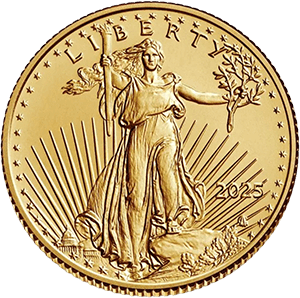
Gold is breaking record highs and why that is happening after last week's weapons parade
Gold prices have recently surged to unprecedented levels, drawing significant attention from investors and analysts globally. This remarkable rise follows last week's high-profile weapons parade in China, an event that has heightened geopolitical tensions and sent shockwaves through global markets. As the world observes these developments, gold's status as a safe haven asset has become increasingly prominent. The precious metal's rally is not merely a reaction to immediate events but also reflects broader economic dynamics, including expectations of U.S. interest rate cuts and substantial central bank activity. To comprehend why gold is reaching record highs now, it’s crucial to examine the interplay between geopolitical uncertainty, monetary policy, and investor behavior.
According to the Financial Times, gold prices surged to a record high of $3,634 per troy ounce recently, driven largely by rising expectations that the U.S. Federal Reserve will cut interest rates. This expectation, combined with escalating geopolitical risks underscored by China's weapons parade, has propelled investors toward gold as a safe haven.
Geopolitical Tensions and Their Impact on Gold Prices
The recent weapons parade in China has intensified global geopolitical tensions, creating an atmosphere of uncertainty that typically benefits gold. When investors face instability—whether from military displays, diplomatic conflicts, or economic sanctions—they often seek refuge in assets that preserve value. Gold, with its long-standing reputation as a store of wealth, fits this role perfectly.

Antonio Ernesto Di Giacomo, Senior Market Analyst at XS, explains this dynamic succinctly: “The recent surge in gold prices reflects a rise in uncertainty and investors’ flight to safe havens as well as the prospect of interest rate cuts from the Fed.” This quote from The Guardian underscores how geopolitical events and monetary policy expectations combine to boost gold demand.
China's weapons parade did more than just raise alarms; it showcased new military capabilities, almost as a demonstration to the United States, signaling potential shifts in global power balances and defense postures. Such displays often lead to increased defense spending and economic uncertainty, both of which can unsettle financial markets. Investors, wary of volatility, tend to increase their allocations to gold, which is less susceptible to political risk compared to equities or currencies.
Moreover, the historical context of gold as a safe haven cannot be overlooked. Throughout history, during times of war or economic crises, gold has consistently proven to be a reliable asset. For instance, during the 2008 financial crisis, gold prices surged as investors fled from stocks and bonds, seeking the security that gold provides. This historical precedent reinforces the current trend, as many traders look back to past events to guide their investment strategies. The psychological aspect of investing in gold during turbulent times also plays a crucial role, as the metal is often viewed as a hedge against inflation and currency devaluation.
In addition to these factors, the global supply chain disruptions caused by geopolitical tensions can further influence gold prices. Mining operations in politically unstable regions may face interruptions, leading to a decrease in supply. This reduced availability, coupled with increased demand from investors, can create upward pressure on prices. Furthermore, central banks around the world have been accumulating gold reserves as a strategic move to diversify their assets and mitigate risks associated with fiat currencies. Such actions by central banks can further exacerbate the demand for gold, making it a focal point in discussions about economic stability and financial security.
The Role of U.S. Monetary Policy and Interest Rate Expectations
Alongside geopolitical factors, the monetary policy stance of the U.S. Federal Reserve plays a pivotal role in gold’s price movements. Gold does not yield interest, so its attractiveness often hinges on the real interest rate environment. When rates are expected to fall, the opportunity cost of holding gold decreases, making it more appealing.

Market participants are increasingly pricing in a series of interest rate cuts by the Fed, which is reflected in the recent price rally. The Money publication quotes Alex Ebkarian, Chief Operating Officer and Co-founder of Allegiance Gold, who forecasts gold prices could range between $3,500 and $4,000 in 2025, largely due to these monetary policy shifts.
Moreover, the Fed's perceived independence has come under scrutiny, adding to market uncertainty. Investors worry that political pressures might influence monetary decisions, which could destabilize markets further. This concern feeds into gold’s safe haven appeal, as the metal is seen as a hedge against policy unpredictability.
In addition to interest rate expectations, inflation dynamics also play a crucial role in shaping gold prices. As inflation rises, the purchasing power of fiat currencies diminishes, prompting investors to seek refuge in tangible assets like gold. Historically, gold has been viewed as a reliable store of value during inflationary periods, which reinforces its demand. Analysts suggest that if inflation continues to outpace wage growth, the allure of gold as a protective asset will only intensify, further propelling its price.
Furthermore, the global economic landscape is also influencing U.S. monetary policy decisions. With central banks around the world adopting varying stances on interest rates, the Fed's actions are closely watched not just domestically, but internationally. A divergence in monetary policy can lead to fluctuations in the U.S. dollar's strength, which inversely affects gold prices. As the dollar weakens, gold becomes cheaper for foreign buyers, potentially increasing demand and driving prices higher. This interconnectedness highlights the importance of global economic indicators in understanding the future trajectory of gold in the market.
Central Bank Purchases and Diversification Strategies
Another critical factor driving gold prices higher is the robust purchasing activity by central banks around the world. Central banks have been steadily increasing their gold reserves, viewing the metal as a strategic asset to diversify away from the U.S. dollar and other fiat currencies.
According to the World Gold Council data reported by Forbes, central banks collectively bought 337 metric tons of gold in the third quarter, marking the second-largest third quarter on record. This massive demand from official institutions supports the upward momentum in gold prices and signals confidence in gold’s long-term value.
These purchases are part of a broader strategy to reduce reliance on the U.S. dollar amid shifting geopolitical alliances and economic uncertainties. As countries seek to protect their reserves from currency volatility and potential sanctions, gold remains a universally accepted and liquid asset.
In addition to the geopolitical motivations, central banks are also responding to the increasing inflationary pressures seen in many economies. With rising prices eroding the purchasing power of fiat currencies, gold is often perceived as a hedge against inflation. This perception is particularly strong in emerging markets, where economic instability can lead to rapid currency depreciation. For instance, countries like Turkey and Russia have significantly ramped up their gold purchases as a safeguard against both inflation and potential economic sanctions, further illustrating the metal's role as a financial bulwark.
Moreover, the trend of central banks accumulating gold is not just limited to traditional powerhouses. Nations such as India and China have been actively increasing their gold reserves as part of their broader economic strategy. This trend reflects a growing recognition of gold's intrinsic value and its ability to provide stability in times of financial turmoil. As these countries continue to bolster their gold holdings, they are also influencing global market dynamics, creating a ripple effect that can drive prices higher and alter the landscape of international finance.
Gold as a Hedge Against Inflation and Economic Uncertainty
Inflationary pressures and economic uncertainty continue to underpin gold’s allure. With inflation rates fluctuating globally and concerns about the durability of economic recovery persisting, investors look to gold to preserve purchasing power.
Alex Ebkarian highlights gold’s performance in this context, noting that “gold has significantly outperformed” other investments amid economic uncertainty. This outperformance is a testament to gold’s unique role as both a store of value and a portfolio diversifier, especially when traditional assets like stocks and bonds face headwinds.
Investors are increasingly aware that gold can act as a buffer during periods of market stress. Its inverse correlation with the U.S. dollar and equities makes it an effective tool for managing risk, particularly when inflation erodes the real returns of fixed income and cash holdings.
What This Means for Investors Going Forward
The confluence of geopolitical tensions, anticipated monetary easing, and central bank buying suggests that gold’s rally may have staying power. While short-term volatility is always possible, the fundamental drivers supporting gold remain robust
For investors, this environment presents both opportunities and challenges. Allocating a portion of portfolios to gold can provide protection against downside risks and diversify exposure. However, it is crucial to consider timing, market sentiment, and broader economic indicators when making investment decisions.
As the global landscape evolves, keeping an eye on developments such as central bank policies, geopolitical events like China's weapons parade, and inflation trends will be key to understanding gold’s trajectory. The recent record highs are not merely a reaction to one event but rather a reflection of complex and interconnected forces shaping the financial world.
In summary, gold’s record-breaking surge following last week’s weapons parade is a multifaceted phenomenon. It is driven by heightened geopolitical risk, expectations of U.S. interest rate cuts, significant central bank purchases, and gold’s enduring role as a hedge against inflation and uncertainty. Investors and analysts alike will be watching closely to see how these factors unfold in the coming months.
Secure Your Financial Future with American Standard Gold
As gold continues to demonstrate its strength amidst global uncertainty, there's never been a better time to consider safeguarding your investments with precious metals. At American Standard Gold, we specialize in providing you with the expertise and options you need to navigate these turbulent times. With over five decades of experience, our personalized investment solutions, including precious metal IRAs and 401ks, are designed to help you protect and grow your wealth. Don't let inflation and geopolitical risks unsettle your financial plans. Contact us today for a free no obligation consultation and take the first step towards securing your financial future with a trusted partner.


